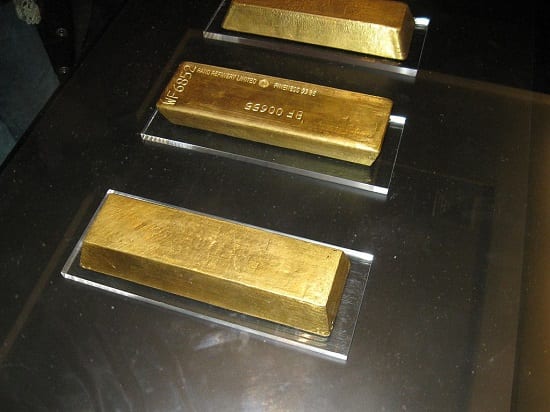Gold Investment and Risk
21/02/2020Daniel Fisher
Free & fully insured UK Delivery. Learn more
Secure & flexible payments. Learn more

Buyback Guarantee Learn more
Most gold investors believe in buying and owning gold in its physical form. Needless to say, this has been a tried and tested strategy for thousands of years. Cities and civilisations have fallen, but the yellow metal has lasted the test of time. But, in today’s modern-day and age, there are innumerable asset classes to invest in. So, the obvious question in the minds of investors is – is it worth investing in gold?
While deemed as low risk, gold investment isn’t completely risk-free. We investigate gold investment and risk in this latest article.
The first risk is that the gold price moves lower in the time you hold the gold, known as market risk. This becomes less likely over the medium term, as any market volatility is ironed out.
If buying paper gold, there are further risks such as possible leveraging of the asset and counterparty risk. Paper asset classes like equities and fixed income instruments like bonds are dependent on the performance of the global capital markets, as well as companies that issue these investment papers. This is known as counterparty risk. If the company that issued your stocks or bonds fails to perform, or there is a crash in the global capital markets, your investment can quickly erode and be rendered useless. Physical gold, on the other hand, is safe from these risks, making it an excellent investment.

Physical gold investments are seen as stable and safe
It is a well-known fact that investors quickly turned to gold during times of financial turmoil. The spot price of gold reached its highest level at the peak of the global financial crisis in 2011. Now, more than ever, the world is once again moving towards another similar financial crisis. Therefore, the current spot price of gold has crossed the $1600 mark, inching steadily closer to the peak of 2011.
Inflation is a key factor that needs to be considered when evaluating the returns on any kind of investment. When you receive returns of 6%, the actual return you make could only be 3%, if the rate of inflation at the time is 3%. The rate of inflation is a moving number, just like the capital or commodity markets. Interestingly, gold has historically beaten the rate of inflation, providing stability to investors and preserving their wealth.
As a UK investor, you are subject to value-added tax (VAT) and capital gains tax (CGT). Interestingly, gold investments (like gold coins and gold bars) are incredibly tax-efficient, depending on the type of investments you choose. All investment-grade gold is VAT exempt in the UK. At the same time, investing in gold coins (such as gold Sovereigns and gold Britannias) helps you avoid capital gains tax, as these coins are considered to be legal tender in the country.
Over the last few years, we have seen the decline of traditionally strong currencies like the Euro and the GBP, owing to political instability caused by events like Brexit. There is still plenty of uncertainty in post-Brexit UK. Investing in gold helps you escape from the risks of falling currencies.
There are so many reasons to invest in gold in 2020, apart from the ones we have discussed above. Liquidity is another great attribute that gold enjoys, in addition to the balance, it can provide within a diversified portfolio. Our investment experts can help you plan your silver and gold investments and protect your wealth. Call the Physical Gold team on (020) 7060 9992 or get in touch with us online.
Image credit: Wikimedia Commons
Live Gold Spot Price in Sterling. Gold is one of the densest of all metals. It is a good conductor of heat and electricity. It is also soft and the most malleable and ductile of the elements; an ounce (31.1 grams; gold is weighed in troy ounces) can be beaten out to 187 square feet (about 17 square metres) in extremely thin sheets called gold leaf.
Live Silver Spot Price in Sterling. Silver (Ag), chemical element, a white lustrous metal valued for its decorative beauty and electrical conductivity. Silver is located in Group 11 (Ib) and Period 5 of the periodic table, between copper (Period 4) and gold (Period 6), and its physical and chemical properties are intermediate between those two metals.